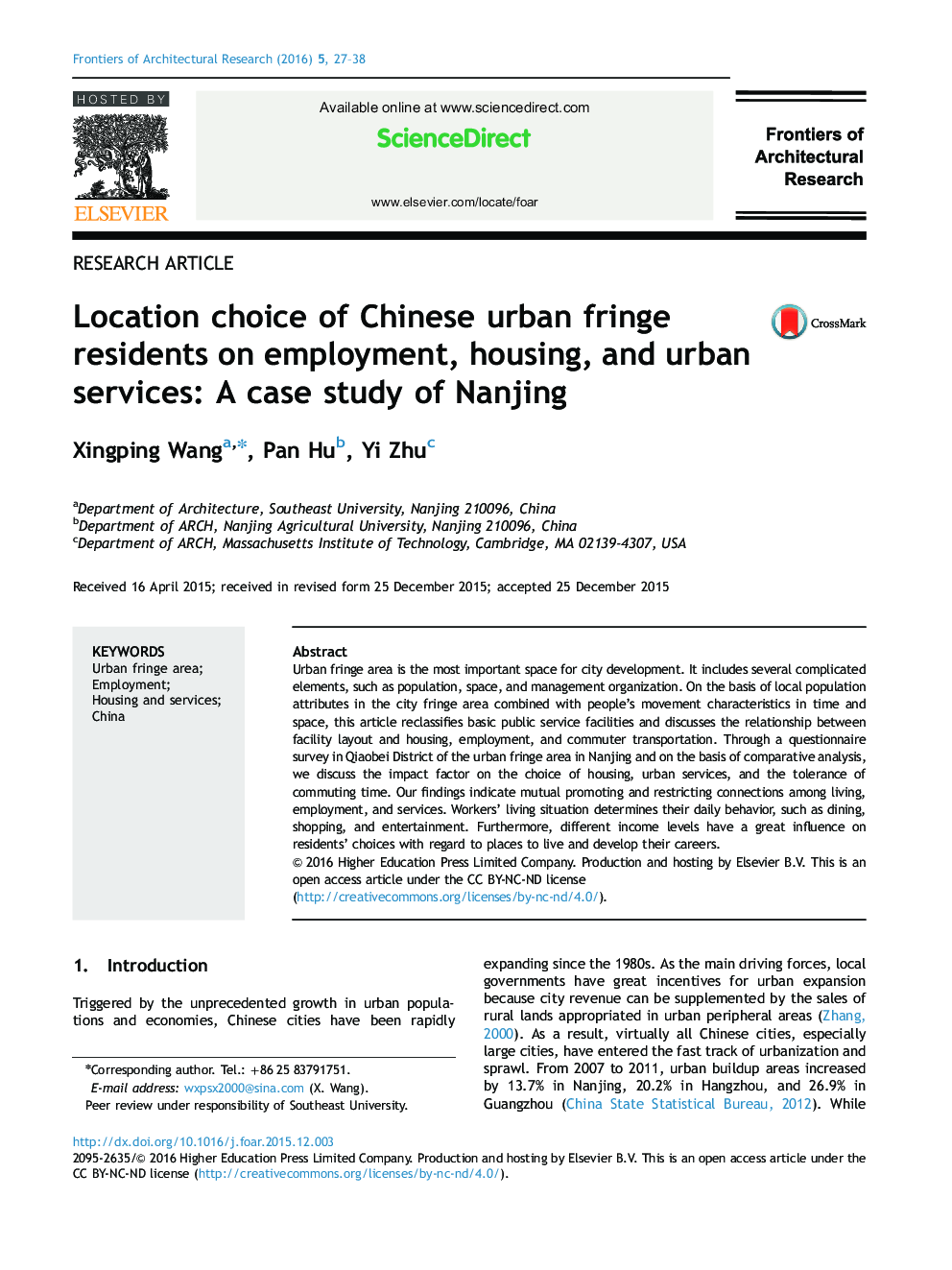| Article ID | Journal | Published Year | Pages | File Type |
|---|---|---|---|---|
| 270684 | Frontiers of Architectural Research | 2016 | 12 Pages |
Urban fringe area is the most important space for city development. It includes several complicated elements, such as population, space, and management organization. On the basis of local population attributes in the city fringe area combined with people’s movement characteristics in time and space, this article reclassifies basic public service facilities and discusses the relationship between facility layout and housing, employment, and commuter transportation. Through a questionnaire survey in Qiaobei District of the urban fringe area in Nanjing and on the basis of comparative analysis, we discuss the impact factor on the choice of housing, urban services, and the tolerance of commuting time. Our findings indicate mutual promoting and restricting connections among living, employment, and services. Workers’ living situation determines their daily behavior, such as dining, shopping, and entertainment. Furthermore, different income levels have a great influence on residents’ choices with regard to places to live and develop their careers.
